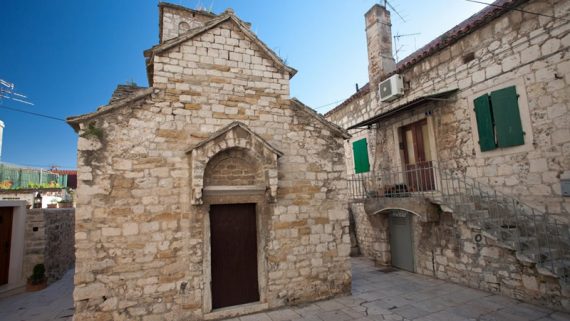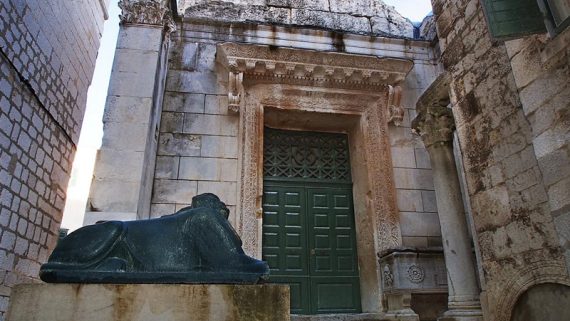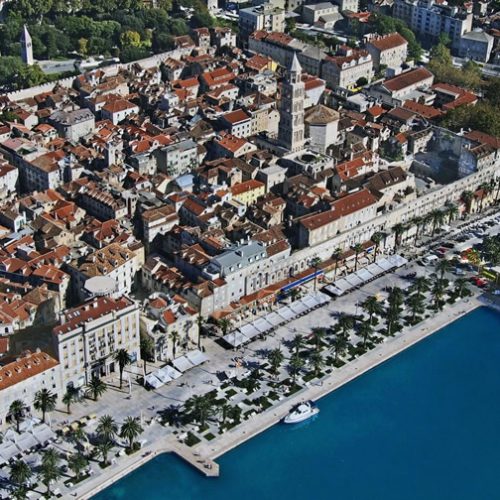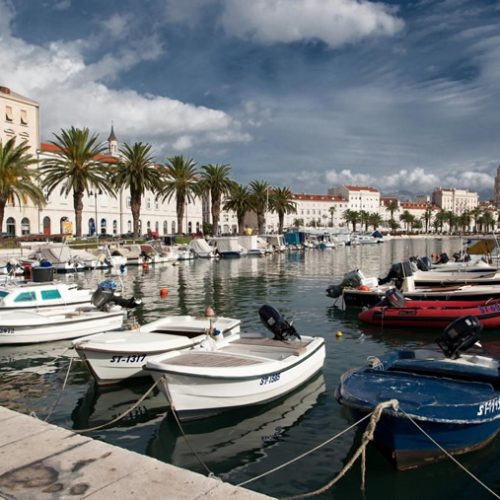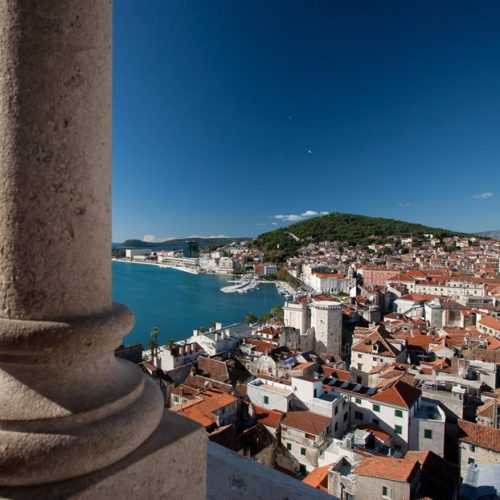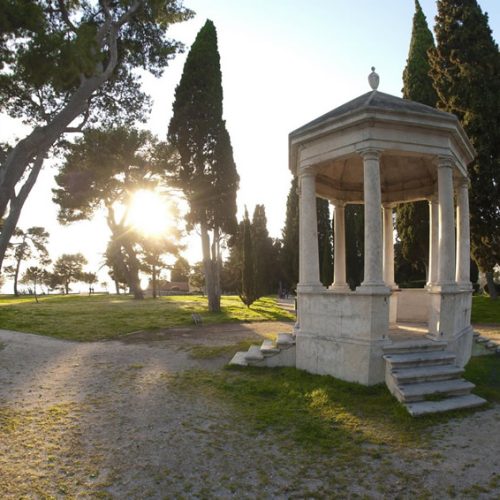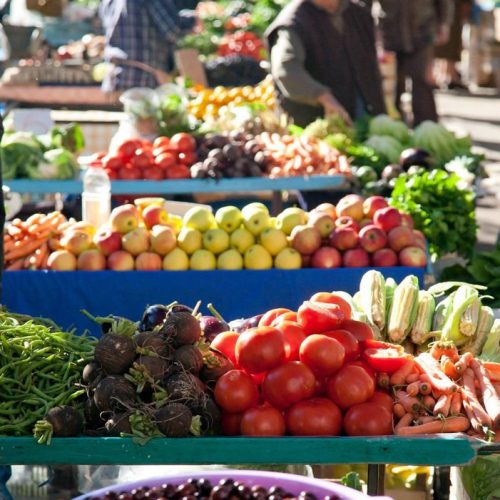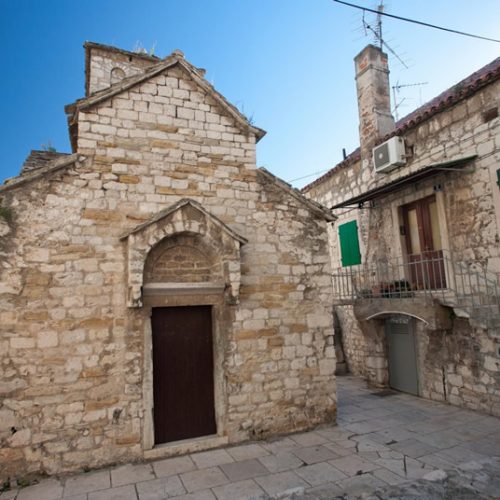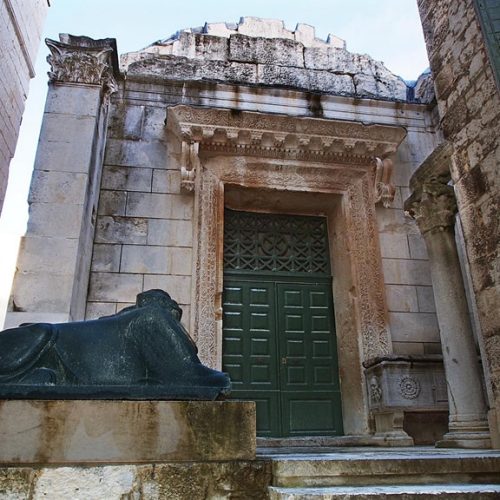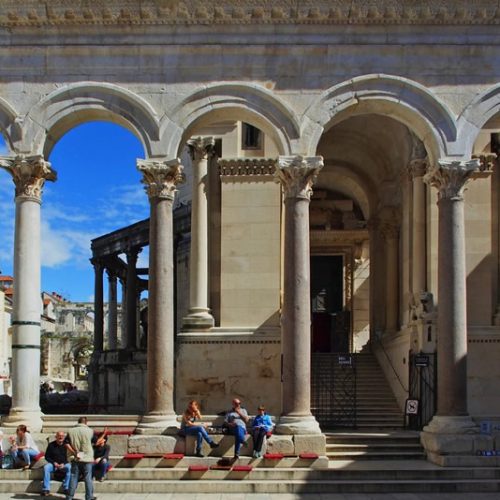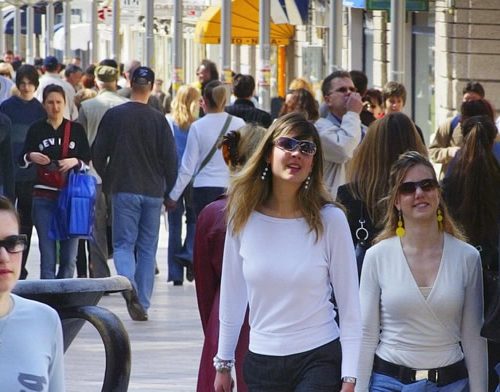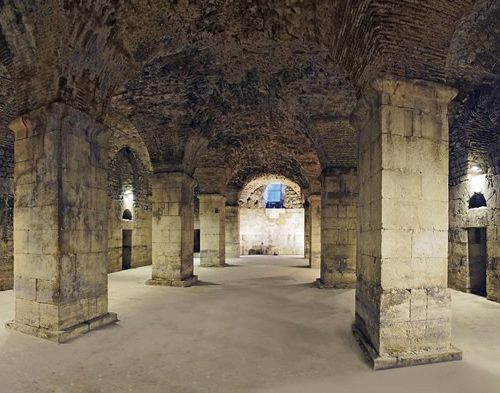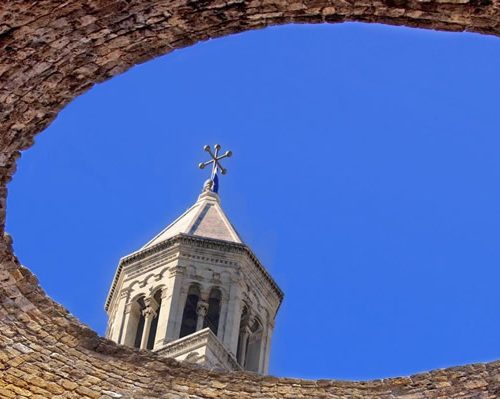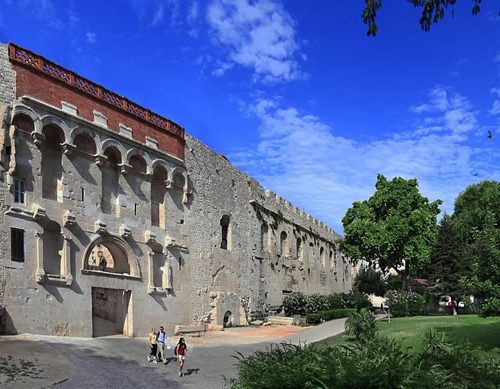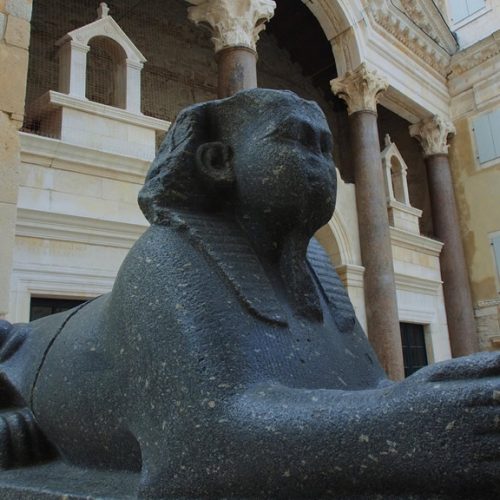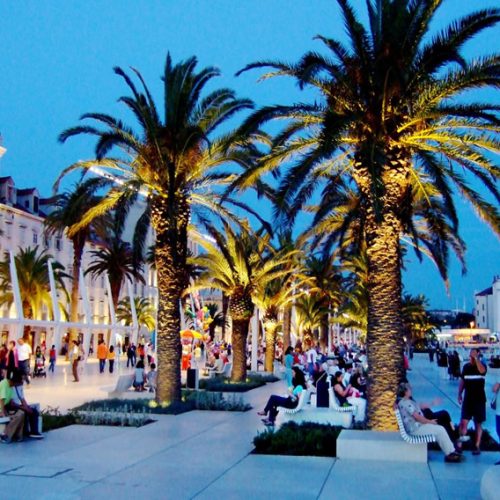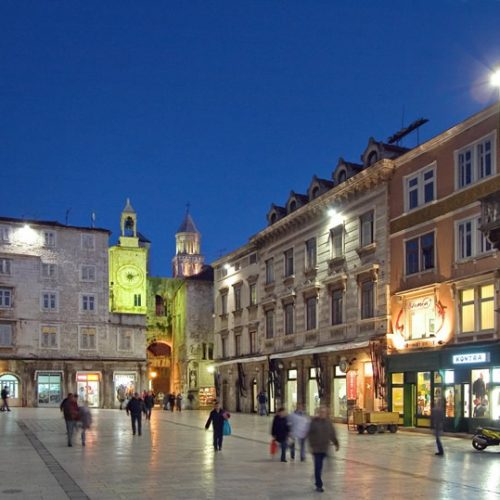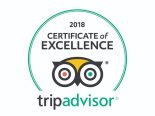Per la buona fortuna non dimenticate di toccare l’alluce del piede della grande statua di Gregorio di Nona, opera del famoso scultore croato Ivan Meštrović. Di fronte vedrete la maestosa Porta Aurea, che poteva essere usata solo dall’imperatore e la sua famiglia e dalla quale, nei tempi romani, la strada portava a Salona, la più grande città romana della costa orientale dell’Adriatico.
Varcate la porta all’imperiale e vi troverete dentro il palazzo. Fate un giro per i suoi vicoli antichi e piazzette medievali, trovate la viuzza più stretta della città, chiamata Lasciamipassare, che si trova accanto al Tempio di Giove, „perdetevi“ nel labirinto delle stanze imperiali di una volta e la strada vi porterà attraverso il Vestibolo fino al Peristilio, piazza centrale del palazzo.
È uno dei più importanti esempi dell’architettura tardoromana, con la sfinge egizia scolpita 3500 anni fa e dominato dal campanile della cattedrale San Doimo, patrono della città. La chiesa si trova nell’antico mausoleo dell’imperatore, per cui rappresenta uno dei più antichi edifici cristiani nel mondo.
Durante l’estate, ogni giorno a mezzogiorno potete assistere al cambio della guardia di Diocleziano mentre lo stesso imperatore saluta i suoi concittadini e i loro ospiti. Avviatevi poi verso la Riva, questa volta attraverso le sale sotterranee del palazzo – magazzini della città medievale, oggi una delle maggiori attrazioni turistiche, dove sono state girate molte scene della famosa serie Game of Thrones.
Un altro posto da non perdere è sicuramente il mercato centrale della città, un’esplosione di colori, sapori e odori della Dalmazia e del Mediterraneo. Da lì entrate di nuovo nel palazzo, questa volta dalla Porta Argentea. Decumano, la principale strada romana, vi porterà alla porta occidentale del palazzo, conosciuta come Porta Ferrea. Alzatevi lo sguardo e cercate di capire l’ora indicata dal vecchio orologio cittadino a 24 ore.
Di fronte si aprirà la Piazza del Popolo o semplicemente Pjaca, come la chiamano gli spalatini, posto in cui dal medioevo si svolge la vita sociale della città. Vi si distingue il vecchio Palazzo Comunale di stile gotico. Continuate la vostra passeggiata verso la pescheria vecchia 120 anni, attraversate la sempre frequentata via Marmontova e visitate le Procurative, una bellissima piazza che ricorda quella di San Marco a Venzia.
Se avete tempo, potete continuare la vostra esplorazione verso il vecchio mandracchio Matejuška e il parco Sustipan che una volta ospitava il cimitero, oppure fate un giro per il borgo di Varoš fino al belvedere del monte Marjan che offre una spettacolare vista della città e si trova accanto al vecchio cimitero ebraico.
Finite il vostro giro con la passeggiata per la Riva Occidentale, seguendo la Via della Gloria dello sport spalatino dove potrete leggere i nomi di numerosi atleti di Spalato che hanno vinto medaglie olimpiche. Naturalmente, potete anche sedervi in uno dei bar e godere il divertimento preferito dagli spalatini – il sorseggiare del caffè osservando la vita che pullula intorno.

 Italiano
Italiano Hrvatski
Hrvatski English
English Deutsch
Deutsch
